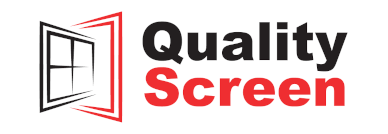The windows in your home affect its interior and exterior appearance while cultivating a personalized aesthetic for your space. Different types of windows offer a range of visible and operating styles that affect their functionality and make certain kinds of windows ideal for specific areas. Many homes feature multiple types of windows, but to maintain a cohesive look, it’s important not to incorporate too many styles. Below, you can read about different types of windows along with the pros and cons of each to help you determine which is best for your home!
- Double-Hung Windows: Though the name isn’t typically thrown around in everyday conversations, double-hung windows are the most common type of window in homes across America. They feature two large sliding frame units along both sides of the glass that are typically balanced with hidden springs. Double-hung windows are found in many different types of homes, including traditional, farmhouse, and modern homes.
Pros: The popularity of double-hung windows means a wide variety of manufacturers from which to choose. The vertical tracks contribute to the window’s lower maintenance when compared to other styles because dirt is less likely to collect. Along with a huge selection, you can also expect to enjoy the affordability and easy operation.
Cons: Since these windows are operated on springs and cords, general wear and tear can warrant maintenance to keep the window in smooth operating order. The wide opening of these windows can also be a safety hazard for small children and a break-in hazard for intruders.
- Casement Windows: These are the second most common type of window. Casement windows can be identified by their ability to crank open via hinges on one side of the window. Due to the positioning of an open casement window, they effectively welcome a breeze into the home.
Pros: Casement windows form an exceptionally tight seal that keeps drafts out of the home during winter. During the warmer months, they bring refreshing air into the house and enhance home ventilation. Unlike double-hung windows, casement windows have a smaller opening that is less of a safety hazard.
Cons: The cranking mechanism that operates casement windows is an outdated design with a high probability of malfunctioning. It may require additional maintenance. When extended, they are also more likely to be broken off by extreme weather.
- Awning Windows: Similar to casement windows, awning windows operate with a crank and hinges. Instead of opening the side, however, the hinges are positioned on top of the window allowing the bottom to pivot. They are often found on lower levels and basements.
Pros: As the name states, the glass forms an awning over the opening when it is ajar. Because of this protection, the window can stay open during rain and other light inclement weather. Since they do not open all the way and the hole is fairly small, they are great for keeping intruders out.
Cons: Using the same cranking mechanism as casement windows, awning windows are likely to need maintenance for part failure. They also are not as effective at bringing in fresh air.
- Sliding Windows: Popular in homes built during the mid-1900s, sliding windows are mechanically simple and minimal in design. Their reliable operation makes them ideal for constant opening and closing. Screens offer an added layer of protection against bugs and other debris.
Pros: Sliding windows can endure many years of heavy use before needing to be replaced. Their simple design and lack of mechanical hardware make them durable and lasting. They also rank with double-hung windows in terms of affordability.
Cons: This is a relatively basic window model, meaning the style has few shape or size options. The horizontal tracks can collect dirt and dust, especially in windows that are frequently opened, meaning that you may need extra cleaning time if you use this style.
- Fixed Windows: Like some birds don’t fly, some windows don’t open! Fixed windows are comprised of a glass pane set within a window frame. Their primary purpose is to provide a view rather than ventilation. They are less common in homes and more frequently seen in larger buildings.
Pros: Their simple design makes them cheap and highly modern. They also save energy because they are permanently sealed and can protect against intruders.Cons: Fixed windows cannot let in any fresh air or provide an emergency escape, so their simple function is aesthetic.
These five, among hundreds of other window styles, can contribute to the functionality and aesthetic of your home. It is important to do research before choosing a window style and consider adding a screen to windows that open!








